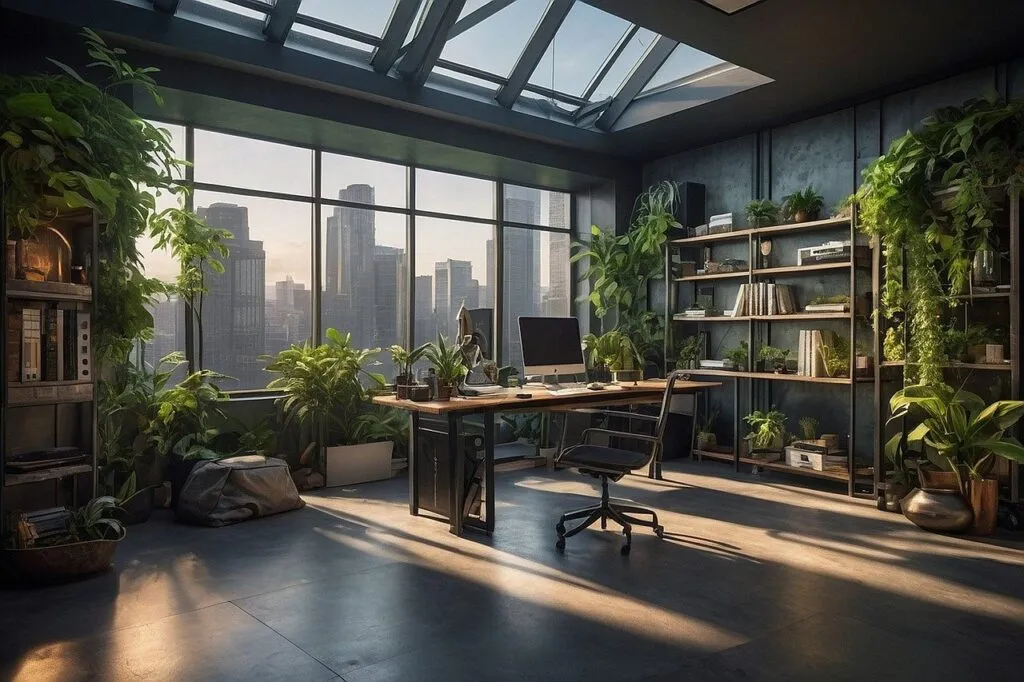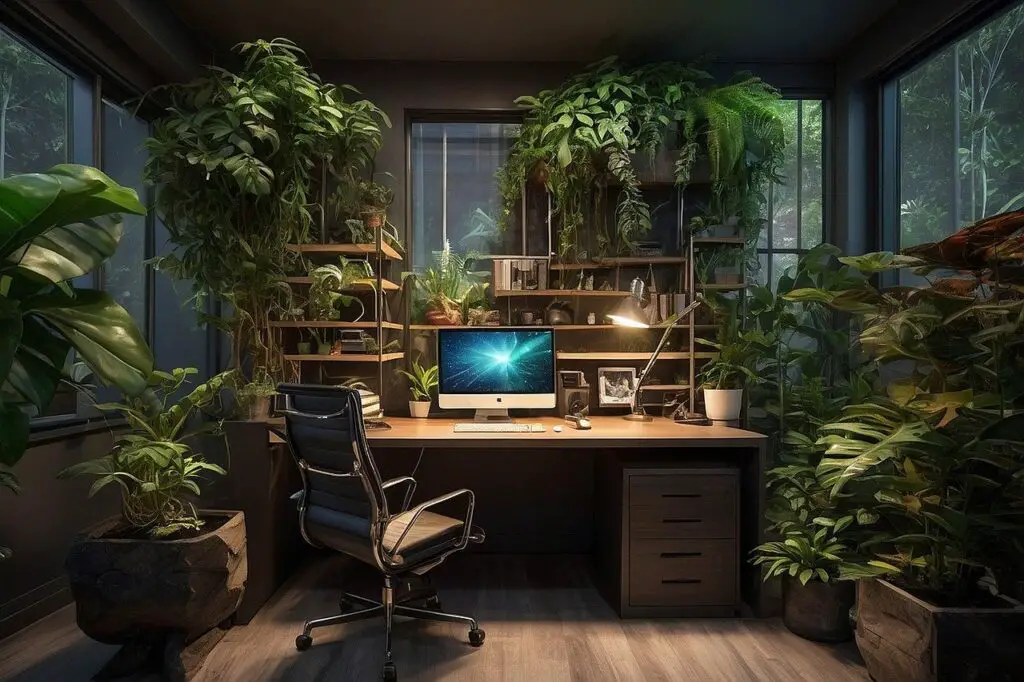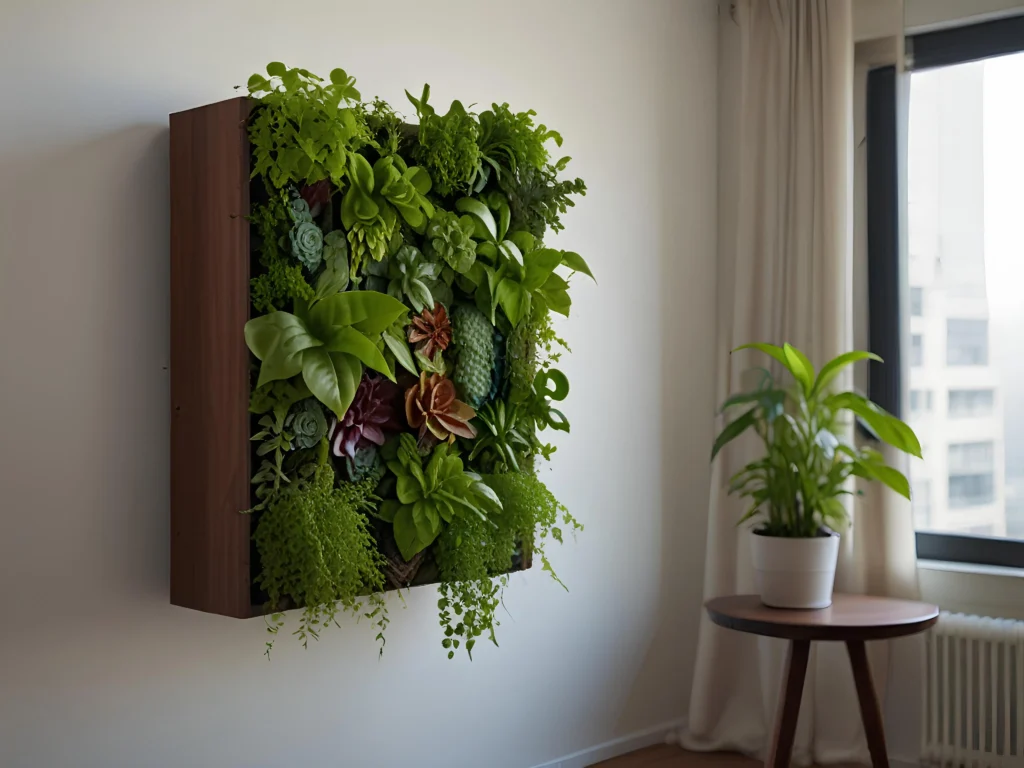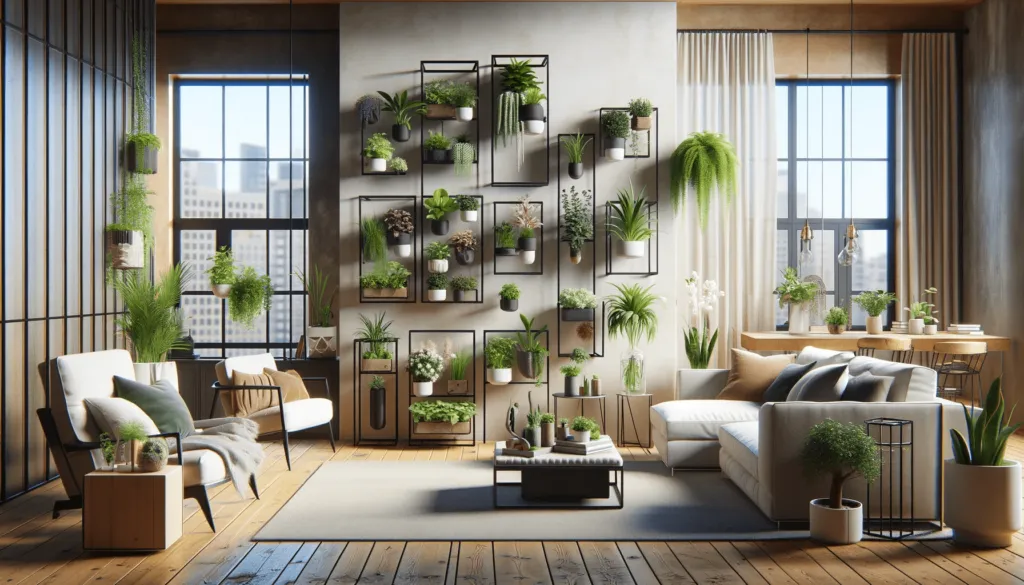We all make an enormous deal out of wanting clean air to breathe—taking that fresh, deep breath and feeling all energized. However, you won’t believe this, but we practically live our lives penned up indoors, like up to 90% of our time! Despite this, hardly any of us actually pause to consider if the air inside our homes and places of work is any good.
It turns out there’s an invisible cloud of crud we’re existing in at home without even seeing it. When the EPA, the Environmental Protection Agency, let’s out that the gunk floating around our rooms might be five times worse than what we’re facing outside, that should set off alarms; that’s incredibly wild, isn’t it?

You’re probably scratching your head, wondering about what’s causing this disaster of indoor air pollution. The culprits are hiding in plain sight—it could be those cleaning sprays you’re using, or the sofa could be off-gassing, who knows what, or perhaps it’s the dust mites throwing raves in your rug. It’s many things, really. Now, before you think you need to zip up your windows and start living like you’re in a bubble (admittedly, that does sound rather interesting), I have surprisingly amazing news. For pollution inside, there’s a very informal, all-natural hack: vertical gardens. These aren’t only regular plants; they’re as if you brought a slice of the rainforest into your living room or workspace. And they aren’t only for show—tthey actively clean up the air.
I’m about to dive deep with you into the quest to clean our air using these magnificent vertical gardens. We are going into how these botanical bad boys can revamp the quality of air we inhale and altogether make our both mental and physical spot a whole lot lively; there’s likely, by heading through what I lay down here, you’ll be brainstorming on making your quarters, like, bulked with vertical gardens.
We can take it as a definite certainty that clean air isn’t only a fable once we help those green walls flourish indoors. We hope this piece may enlighten you about how important what you’re huffing in is and get you all set to freshen up your immediate air with a leafy tenor.
Table of Contents
Understanding Air Pollution

Diving right into this idea of indoor air pollution makes us wonder what’s lurking around in our own spaces. You may be a tad disbelieving that something we can’t even see, like volatile organic compounds (VOCs), is basically convening in our rooms. Think about it: these compounds come from everyday items—paints, cleaners, air fresheners. They could be why sometimes you feel a bit off, like getting headaches or feeling dizzy, after doing a heavy cleaning or redecorating your space.
But let’s not stop there. Added to our list of uninvited guests are the likes of dust mites, mold, and pet dander. These people are professionals at kicking off allergies or making asthma problematic to deal with. I’m not even going to start on how secondhand smoke and the silent but deadly carbon monoxide take a toll on our health in the long run.
Speaking health, frankly, poor air quality inside isn’t something to shrug off. It might lead to annoying things such as constant headaches or feeling tired all the time, but serious issues like lung disease or cancer can sneak up on us. It’s a bigger worry for young people, older people, and anyone already fighting health battles.
What’s the industry plan? We’ve been told opening up windows, getting air purifiers, or keeping our places squeaky clean might help freshen up the air—but let’s think about this: open windows could invite more bad air in, air purifiers can hit the wallet hard and make a racket, and no amount of cleaning can catch every little particle tainting our air.
That tees us up for vertical gardens–they’re basically Mother Nature’s own air-cleaning crew, without needing a day off. In the next part, we’ll zoom in on how they do their magic. For now, it may seem hard to believe but we can take comfort in knowing that there are ways to deal with indoor air pollutants effectively, and understanding what we’re up against is step one towards a cleaner, healthier living space.
The Power of Plants
Think about sitting in a room surrounded by plants. When you take a deep breath, the air feels extremely refreshing and clean. It’s all thanks to the plants. They’re not only ordinary green things; surprisingly, plants are basically the Earth’s natural way of making the air around us cleaner. They eat up carbon dioxide, give out oxygen, and get this—they can even grasp toxins and pollutants out of the air, acting in practice like a built-in filter for your room.
Now, it may seem hard to believe, but we can take comfort in the fact that NASA, the space agency, found out that some plants are professionals at cleaning the air. In the late 1980s, they did the Clean Air Study to see how to clean the air on space stations, and what they found was pretty spectacular. Plants like the snake plant, peace lily, and a significant amount of others can yank harmful substances like formaldehyde and other nasty chemicals right out of the air, making these plants the secret superheroes of air purification. Start with the snake plant. It’s sometimes additionally named the mother-in-law’s tongue, but it’s not scary, I promise. It’s of significant consequence for getting rid of formaldehyde. Then there’s the peace lily, which looks beautiful with its white blooms and is a genius at cleansing several pollutants. Don’t sleep on the spider plant, either. It’s extremely easy to take care of and is great at tackling carbon monoxide and xylene.
But hold up, there’s more. The list of these air-purifying champs includes bamboo palm, English ivy, Chinese evergreen, and the dracaena family too. With many options, you can easily turn your location into a mini-jungle, suspenseful in knowing these heroes are making your air much better.
Let’s not trick ourselves, though; adding a few plants won’t fix all your air quality problems. They’re part of a bigger picture that should also include doing items such as getting fresh air in and keeping your space clean, but it’s a pretty sweet start.
Why not dip your toes into being a plant parent? Go grasp a portion of these green wonders and improve your air and your living space’s undercurrents. You may be a tad disbelieving that something as simple as a plant can do so much, but your lungs (and maybe your Instagram followers) will definitely appreciate it.
Vertical Gardens: A Green Revolution

Imagine stacking several plants on top of each other to form a giant green wall. That’s the idea behind vertical gardens—this brilliant concept for sprouting plants upwards instead of out. These aren’t only any walls; they’re living, breathing ones that decorate your living or working space without hogging all the ground area. Almost inevitably, we see these lush vertical setups as not only aesthetically pleasing but superb at purifying our air.
But hang on, the perks of having a vertical garden climb way past giving us cleaner air to breathe. Think of these gardens as the ultimate do-it-alls in the concentrated environment, or world, of plants. They help regulate your room’s temperature, making it warmer during cold times and better in the heat. They’re surprisingly good at keeping things quieter, too, by soaking up unwanted noise. And if that wasn’t enough, being close to these beautiful green things can actually make you feel less stressed and more excited to get things done, polishing your mood like no other.
Now, you may be a tad disbelieving that setting up one of these green marvels is something you could pull off. It’s much easier than you might think, though; there are kinds of set-ups out there, from frameworks that prop up the plants to pocket and tray systems that let your gardens grow in sections or layers. The marvelous thing is, you don’t have to be a gardening guru to make it happen. Choosing plants that fit your space’s light and watering schedule, picking a setup that doesn’t break the bank, and then letting your creativity loose with various plants and patterns is all it is about.
Sure, keeping a vertical garden in top shape takes a little hustle—watering, trimming, and feeding—but the payoff? Worth it. There is a green slice of paradise right in your room, helping the planet while jazzing up your area. If things get tricky, there’s always someone at a local plant shop ready to toss you some tips.
Why not dive into the concentrated environment, or world, of vertical gardens? Aside from getting a killer piece of natural art for your spot, you obtain a load of amazing benefits for your wellbeing and the planet’s too. Getting in on this green trend means dialing up the wonderful factor for both your environment and yourself. Who thought going green could not only help the environment but also turn your space into this wonderful, living artwork?
Case Studies: Successful Implementation of Air-Purifying Vertical Gardens
So we’ve been diving into how extremely wonderful vertical gardens are and how you can basically start your own. Now, let’s discuss real stories where they’ve spruced up the location. Whether it’s an enormous office or even a hospital, these green walls are everywhere, helping keep the air clean and making people feel good.
Offices are getting in on this trend. You’d think an office is about paperwork and endless emails, but Some are bringing in these lush vertical gardens. The Microsoft office in Vienna moved forward with a vertical garden across three floors and crammed in over 1,000 plants. Besides looking amazing, it’s also performing tasks like keeping humidity in check, making it quieter, and cleaning up the air–but it’s not only giant companies that are into vertical gardens. Even people’s homes and high-rise buildings are getting decked up with greenery. Take the “Bosco Verticale” in Milan; it means “Vertical Forest”. It’s these two tower blocks draped in trees and plants, essentially a forest in the sky, that make the city center look wild.
Schools and colleges aren’t staying behind either; the University of Ottawa has an enormous vertical garden that’s both a green lung and a marvelous outdoor classroom for students; then there is a primary school in Australia where they put a vertical garden in the library. Imagine relaxing with a book surrounded by a mini-forest. It sounds pretty relaxing.
And vertical gardens in hospitals—wow, it’s an approach-changer. Places that are usually all white walls and have antiseptic tenor are being transformed. The University of Iowa’s Hospitals and Clinics popped a giant 1,400-square-foot living wall in one of their buildings; that’s both boosting the air quality and making the location more inviting.
These green walls aren’t only a special decor item; they’re making offices, schools, homes, and hospitals healthier and a whole lot nicer to be in. Bringing plants indoors or covering buildings with them is turning out to be an enormous win for all individuals. And we may thus possibly come to the direct conclusion that, as this trend catches on more, we’re going to see even better and smarter uses of vertical gardens everywhere.
Whether you run an office, live in your cozy nook, or manage a hospital, adding a bit of green with a vertical garden seems to be a top-notch move. We hope this piece may enlighten you about the green revolution that’s growing—literally, time to hop on the vertical gardening bandwagon, people!
DIY: Creating Your Own Air-Purifying Vertical Garden
People, we’re diving into how to make your own air-purifying vertical garden, so you don’t have to sit back and watch the experts have all the fun. It’s better than it sounds. You won’t need a large amount of expert knowledge or anything.
Now, picking the right sort of plants is up first. Surprisingly, you don’t need to be a wizard in plant science to do this. Grass plants are famous for cleaning the air. Let us examine heroes such as the snake plant (not as mean as it sounds), peace lilies, spider plants, and the classic pothos. These plants are the real MVPs in fighting against air nasties.
When you’re ready to set up, remember, there’s many ways to start your vertical garden. You could move forward and DIY with a pallet, fabric, and pots if you’re feeling adventurous. Or, if DIY sounds like a headache, you can definitely find a vertical garden setup that’s ready to go. Be sure it fits where you want it and looks spectacular in your space.
But, let me be real with you all: the MVP of keeping your garden amazing is maintenance. One can see—unquestionably so—that keeping your plants thriving isn’t a full-time job. Stick them where they get a decent light—but not too much. Those air-purifying champions? They generally dig bright, but not direct, sunlight.
Next, we engage in an intense examination of watering your vertical oasis. These setups can get thirsty fast, so you’ll want to make sure the soil feels dry before giving those plants a drink. But remember to not drown them. Leveling up your plant-parenting skills by introducing activated carbon to your system could boost those air-cleaning undercurrents.
In no time, with a bit of care, your vertical garden will be sprucing up your space and scrubbing the air clean. And the best part out of all this? Knowing you’ve spiffed up your home with something not only amazing to look at but also good for your health. Imagine all the hearts your plant wall photo is going to rack up online!
Really, what’s stopping you? Time to dive in and start building that show-stopper vertical garden. Your guests (and your lungs) will be high-fiving you for it. Let’s get planting, my friends!
The Future of Air Purification
The world is getting its act together with cleaning the air, and vertical gardens are starting to play the main role in this important showdown against air pollution. Now, we’re not only visiting the basics with our usual flower pots. We’re stepping into the territory of vertical gardens that are informed enough to take care of themselves—think watering, checking up on their health, and even picking their own produce. Imagine a wall, alive and kicking, that knows exactly when it’s thirsty or hungry and gets what it needs without a single complaint. Or what about a garden hanging up high that cleans the air and contacts you with a message when it’s time to pick a mint for your tea?
Having said that, to truly smack air pollution down, we must go bigger; that’s where the magic happens when you throw vertical gardens in with other ways to purify the air. Imagine a building that’s basically a superhero in air cleaning, with its green coat, a garden on the roof, and an indoor vertical garden all teamed up; toss in those sci-fi air filters, and instantly, you’re breathing the freshest air around.
Now, twist it, and let’s think large—like building tall and city-wide. A future where buildings are not only buildings; they’re breathing green giants. Parks and spaces where people hang are filled to the brim with vertical gardens so tall that they’re basically natural art, seeing how marvelous and refreshing they make the air. This might sound out of reach, but no, it’s something that could happen.
Cities everywhere are already dropping into this trendy way of green living; take Berlin with its CityTree, mixing up moss and algae to clear the air, or the Nanjing Green Towers in China, planned to be decked in thousands of plants. Everyone’s racing to turn their hometown into the green heart of tomorrow.
And in the final analysis, one finds that the shift to cleaner air is not only about those grand show-off projects. It drills down to us, ordinary people, pitching in to scrub our air cleaner, bit by bit. Maybe that means putting a little vertical garden by your desk, backing shops that get the incredible weightiness of purifying air, or pushing your city leaders to go green. All those components add up.
Here’s to aiming high. Let’s picture a world where taking a breath of air is like a sigh of relief because we’ve gotten our act together for our planet and our health. And let’s kick off this green revolution, vertical garden by vertical garden.
One, if they so choose, may ponder about the eliminations that technology and innovation can open up in purifying our air. Whether personally or collectively, every step towards green progress counts significantly towards a sustainable future.
Conclusion

What a ride we’ve had diving into how cool air-purifying vertical gardens are. These things aren’t only about making the location look beautiful; they actually do a lot of lifting in cleaning up the air and making our corners of the world very much greener. Let’s quickly go over what blew our minds, yeah?
One can see, unquestionably, that vertical gardens are legitimate nature’s way of scrubbing the air clean; they gobble up the bad particles in the air, swapping it with that sweet, fresh O2 we all love. For real, they unlock that tenor where everything’s calmer, cheerier, and a group is more welcoming, whether we’re relaxing at home or slogging away at work.
But, wait, there’s more to these leafy heroes. Vertical gardens have this magic ability to cut on noise, keep the temps inside informal without cranking the AC all the time, and they even save on energy bills because they’re essentially nature’s insulation. They’re out here battling the yuck in the air–and making our playpen, aka Earth, an excited-up paradise of health and smiley faces.
And now, it’s like, if you want to swoop in and turn an empty wall into this blooming piece of art, why the heck not? Try sticking a mini plant wall in the den or go big with a green masterpiece at your 9- to 5-bedroom space. Every patch of green helps, yup. Imagine getting hooked on plants and really feeling zen about the air you’re taking in.
But if you’re not about to turn into a green ranger now, it’s wonderful. There are still groups of other ways to ride the air-purifying vertical garden wave. You could be the one to amp up the talk about popping more green spots around town, cheer on places that dig the whole clean-air tenor, and call up your peers about how important vertical gardens are.
Because, clearly, getting clean air indoors isn’t a bonus; it’s basics. We’re convening inside a lot, and excitingly, the quality of our air is major for feeling good and staying sharp. By getting friendly with the idea of air-purifying vertical gardens, we’re setting up for a lush, joyous, and forward-thinking tenor for not only us but for the family coming up after us, too.
Let’s not only speak; let’s actually start sowing a change. Picture our pads and cities crammed with this thriving, airy green scenery that breathes life and spirit into our days. Let’s craft a future where each inhale is literally a swallow of clean living.
‘Cause rolling deep with caring for our rock, Mother Earth means she’s got us right back. And one, if they so choose, may ponder that’s the insanely marvelous juice of embracing simple yet powerful vertical gardens.
Frequently Asked Questions (FAQ)
I’ll tell you what you need to know about vertical gardens because I see there is a significant quotient of questions. Here, we’re going to tackle every major doubt everyone seems to have about these wonderful plant walls.
Do vertical gardens make allergies pause a bit? Absolutely, they do! They’re like natural air filters that tackle particles in the air that make you sneezy, such as dust or pet fur. Plus, because the air around the plants gets a bit more humid, people with allergies might feel a bit better; think of it as your personal group of plant-side allies against sniffles.
I wonder if you need any special tools to set up this garden. No. To kick things off, you only need the basics: pots, dirt, and something to prop the plants up against–but if you’re looking to level up, there’s a lot of upgraded gear you can grasp, like water systems that feed your plants without you having to do much or wall panels that let you slot plants in like Tetris blocks.
And if we’re diving into those common curiosities, an enormous one is: How often do these high gardens need water? Here’s where you need to pay attention because they’re a bit needier than your regular garden-variety houseplants. They dry up quicker, so get into the habit of poking the dirt to see if it’s dry about an inch down. That’s your signal to water them. But, please, no overdoing it because plants can’t swim.
Got a space you’re trying to fill with cleaner air but not sure how many leafy friends you need? A neat little tip is to keep one plant for every goldfish bowl-sized space—eevery 100 square feet of room—but if you’re wholly invested in this air-cleaning business, the more, the merrier. Stack them up as much as you like; it’s your garden and your rules.
And here’s a wonderful tip: You can grow things you can eat in a vertical garden! Yes, plants that keep your air clean and your stomach full are a win-win. Let us examine tasty greens like lettuce and herbs such as basil. Keep them away from the decoration-only plants and stay organic, from soil to pest-control. Chemicals in your lunch are an enormous no-no.
And we may thus possibly come to the direct conclusion that, while it might seem a bit overwhelming at first, these answers should clear up a significant quotient of the confusion about kick-starting an air-purifying vertical garden. Don’t stop at what’s known; try out new things, mix up which plants you grow, discover something amazing, and share it.
There can possibly be gratification in knowing that even those people with award-winning indoor jungles had to start somewhere. Why not you? You might not only find a new passion but also become the pioneer of high-rise horticulture ! The possibilities reach as high as your garden grows.


